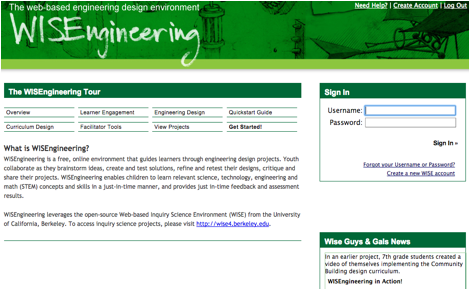
Wise Guys and Gals (WGG) is funded through a grant from the National Science Foundation (NSF), Award Number DRL 1422436.
Boys & Girls as WISEngineering STEM Learners
Overview:
Hofstra University's Center for STEM Research in conjunction with Brookhaven National Laboratory (BNL), the CUNY Graduate Center's Center for Advanced Study in Education (CASE), the Boys & Girls Clubs of America, and 25 Boys & Girls Clubs (B&GC) in New York and New Jersey have submitted an Innovations in Development Project for Advancing Informal STEM Learning.
WISE Guys and Gals (WGG) – boys and girls as WISEngineering STEM Learners – will introduce middle school youth to innovative and engaging blended STEM-based engineering challenges that include both online and hands-on activities. Using an evidenced-centered design approach to development and assessment, WGG will develop, review, try-out, revise, and eventually pilot, research, evaluate, and disseminate short (one-hour) and longer (six-hour) design activities. The underlying theoretical framework used to create these design challenges (to facilitate youth development of engineering thinking, STEM habits of mind, and better problem-solving strategies) builds upon proof-of-concept work supported by NSF and the Bill and Melinda Gates Foundation. The open-source, online interface of WISEngineering provides numerous virtual tools (e.g., social networking, Design Journal, embedded assessments) that promote learning and collaboration through challenging, thoughtful, and creative work. By the end of the Project, over 6600 middle school learners, the majority from groups underrepresented in STEM learning, will be provided with opportunities to experience engineering design as they develop engineering thinking, new STEM competencies, STEM career awareness, and an appreciation for the civic value of STEM knowledge. Additionally, B&GC throughout the U.S. will have new tools for engaging their youth in STEM.
Broader Impacts:
WGG will increase knowledge about informed engineering design and interconnected learning and can be applied in engaging ways within informal STEM settings while promoting engineering thinking, appreciation of STEM, and collaboration. WGG will involve youth from underrepresented groups through its partnership with B&GC. This work will create a deeper understanding of how the use of informed engineering design can promote STEM learning and engage youth in collaborative STEM activities. WISEngineering is open-source, available to others, and can capture extensive data, which can be used for research and practice. Broad dissemination to B&GC, National Laboratories, CASE, and other informal STEM settings (e.g., museums, afterschool programs, and home) is expected.
Advances in Wise Guys & Gals – Boys and Girls as WISEngineering STEM Learners
The Project staff has been very busy from before the official start of the Project to assure a smooth and productive year. There have been several initiatives we have undertaken to enhance the quality and the Project itself. In this Project, we work, supporting each other’s primary efforts.
Reference terminology: The people who provide face-to-face instruction for the youth in B&GC are Learning Facilitators; the youth are Learners; and the Project staff that provides professional development are Project Liaisons (PL). The curriculum development team members create activities that were initiated by the whole team with the support of the advisory board. The Project Liaisons test out activities and report findings to the curriculum team for incorporation in the final activity design. A similar process occurs with the software development, led by co-Project Liaison Xiang Fu. The whole team provides feedback to the evolving and improving WISEngineering learning environment. An important feature of WGG is that the Learning Facilitators are not content providers, but rather they provide a safe learning environment for the activity to occur. The WISEngineering environment provides all the content information and the assessment; and because it provides automated assessment, we can track youth learning and participation.
Activity Development
Signing in requires a Facilitator to provide youth with information about the course; here is the login page:

The Project team decided that an easy on-ramp was needed to introduce B&GC to WISEngineering. The first experience was for Learners to master successfully logging in and creating their own avatar with a High-Five activity, where they use their own avatar to give the Facilitator a ‘high five.’ This proved to be a very engaging activity and encouraged continuing participation.
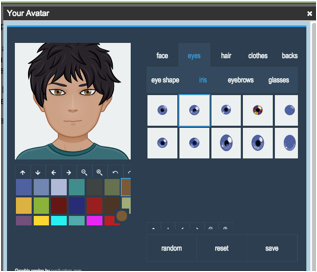
The next positively received activity was determining the optimum potato chip. This engaged the Learners and we found that the idea of no correct answer, but an optimum one depending on their values, was challenging for many Learners who are used to uniqueness in STEM.
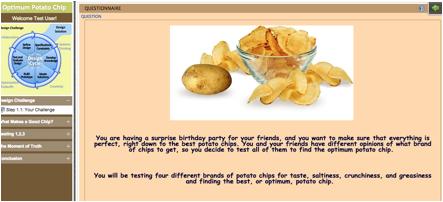
As the activities evolved, we refined the framework, paying attention to the constraints of limited time—designing for 75 minutes. In terms of STEM careers, each activity is framed in terms of an engineering discipline (e.g., mechanical, electrical, civil), and a video clip discusses challenges engineers within the discipline encounter. The activities are based on the informed engineering design pedagogy, where Knowledge and Skill Builders (KSB) provide the scaffolding information about the challenges, so Learners understand what they are doing and why. We mined the resources of teachengineering.org at the suggestion of advisory board member, Dr. Jacquelyn Sullivan, lead architect for the Teach Engineering Project, and developed additional activities to share with the Learners.
Short Activity Snapshots
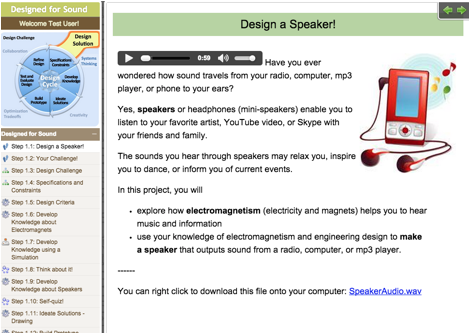
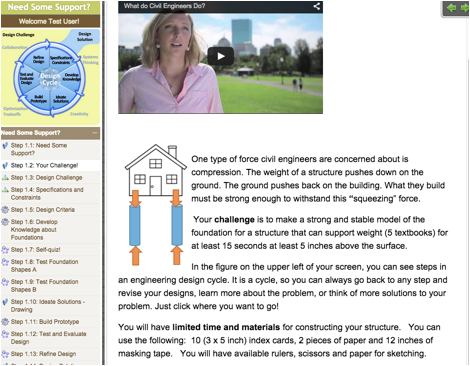
Slime
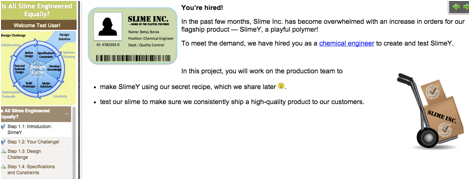
Hover above it all
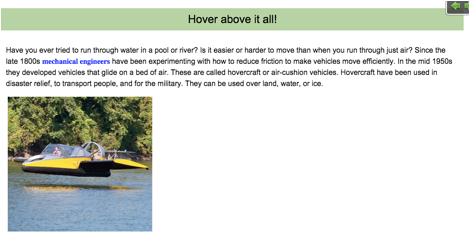
Filtering Yuk
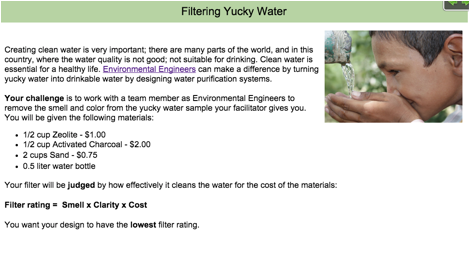
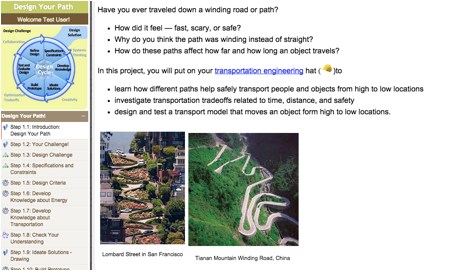
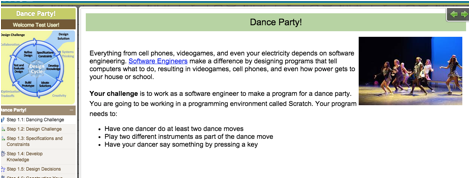
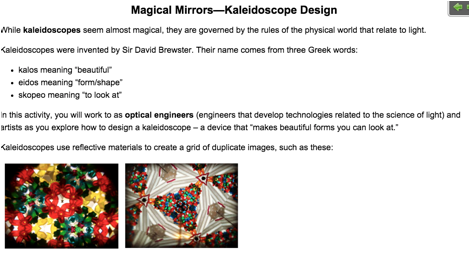
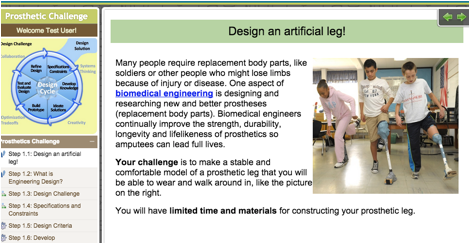
Extended Activity Snapshots

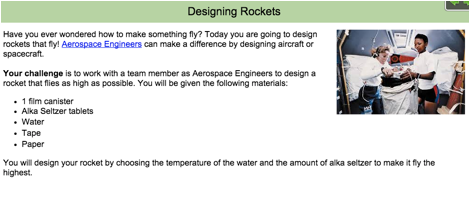
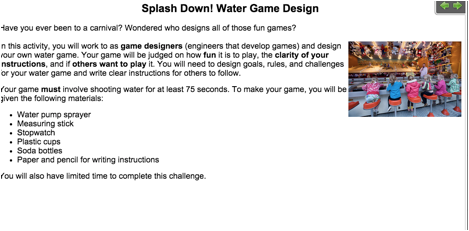
WuGG to the Rescue
From very early in human history, people have engineered shoes to protect their feet. Anthropologists believe that shoes were invented between 26,000-40,000 years ago. In early days, sandals or shoes made of plant fibers, animal skin, or wood were popular.
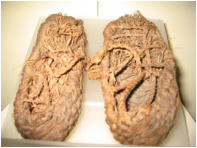
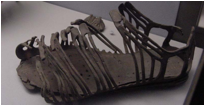
Today you and your partner need to draw on your engineering skills to save your lives! The airplane that you were traveling on has crashed in rugged, mountainous terrain. Fortunately, you survived with just a few bumps and bruises. Unfortunately, during the tumultuous descent, one of you has lost a shoe. You will need to engineer a shoe with the materials you have available so that you can walk down the mountain to safety.
Engineering is often a process of improving upon previous designs. Today you will engage in this process. First you will construct a shoe called a WuGG using a given set of directions. You will test your WuGG. Then you will think about how you might improve a WuGG redesign, and test your new design.
You will work with a partner and have limited time and materials to engineer your shoe.
The WISEngineering Environment
A Web-Based, Open-Source, Engineering Design Platform
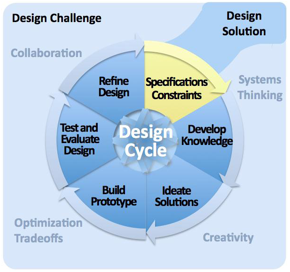
For engineering projects, a spiral learning model is a very natural model of the learning process. Given a design challenge and the specification of an engineering project, the engineer will first develop the domain knowledge and ideate solutions. Then they will build a prototype, test and evaluate the design, and then refine the design. This process can be repeated multiple times until the final goal is reached.


All learning nodes are tagged and clicking the corresponding stage on the navigation control brings the students conveniently to the corresponding step.
Evaluation and Research
As part of the evaluation and research efforts the project seeks to understand how a blended learning environment based on informed engineering design, created for informal STEM, is used; particularly in a setting where the Facilitator (B&GC staff) turnover is great, and Learners often have an option of “dropping in or out.” Furthermore, we will examine how the virtually collected data that allows for WISEngineering’s just-in-time feedback to Learners and Facilitators are used within an informal setting.

The WISEngineering Architecture
One of the goals of WGG is to be able to scale to many Boys & Girls Clubs. This requires a system architecture that is scalable. We also want to be able to learn from what the youth are learning – their behavior in WISEngineering – as part of our research initiative. For that we had to restructure the environment into satellite servers that would host regional clubs, for instance, and where the various activities would be stored and a central report server, which communicates with the satellite server, hosts the Artificial Intelligence software that allows us to automatically assess extended responses. Multiple choice and unique answer responses are assessed within the satellite server environment.
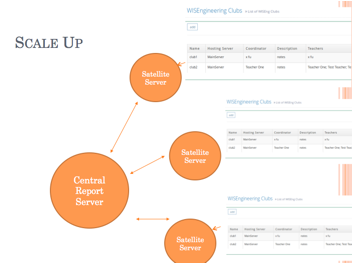
Automated Grading
The extended response assessments required a trained system based on open-source EdX software. Our preliminary work indicates that in developing a four-point rubric, we needed at least 10 examples of work at each level for initial system training. So, the quality of the materials used for system training (calibration) is critical.
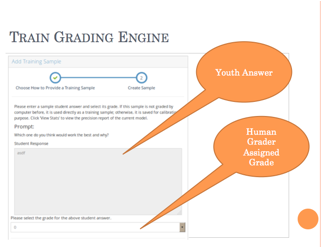
The system monitors the quality of the system calibration.
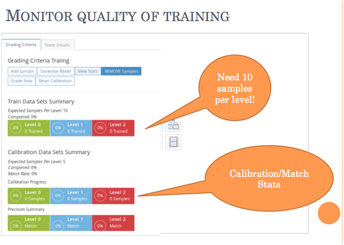
As part of our development of the activities, we are linking the learning goals to different questions so we will have a robust data set for each participating Learner.
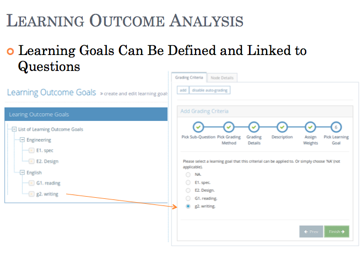
There is a built-in project reporting system so we can monitor club progress as well as Learner progress within the clubs.
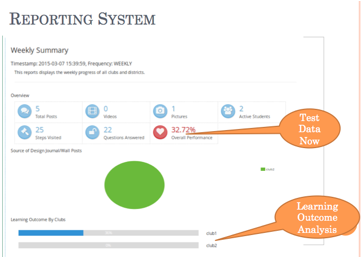
Design Journal and Design Wall
WISEngineering uses functionalities to scaffold engineering design: the Design Wall, and Design Journal. The Design Wall is like social networking websites or blogs and enables collaboration and critique of designs by posting on a “wall.” Students can post images as well as video clips that they have found for inspiration in the ideation phase, or post revised designs after testing. Students can use the Design Wall to share with team members who may be within their same class. The Design Journal keeps track of everything the students generate and is regarded as a private scratch book owned by the student for documenting the entire design process of an engineering project. From the Design Journal, students can select to publish their ‘private’ entries to the public Design Wall for sharing. Both the Design Journal and Design Wall facilitate authentic engineering practices as well as reflection.
Here is a sample posting from the Design Wall, where participating youth can post comments on each other’s work.
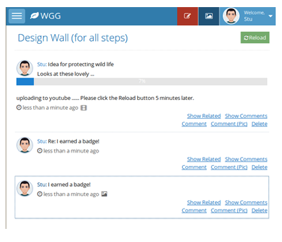
Tablet Version of WISEngineering
We were able to reprogram WISEngineering, which was originally designed for PC use, to Android tablets. All B&GC participants were given 7-inch tablets and were able to perform all their work in the tablet environment.
With a special Chrome web application designed for a 7-inch Android tablet device, WISEngineering allows students to view all the related engineering lab curriculum materials while working on their hands-on experiments. Students no longer have to walk between their desktop computers and the workbench that they use to assemble their projects. The tablet version supports all the powerful tools already included in the WISEngineering system for supporting scientific calculation. The mobile tablet platform embraces social media technology for supporting a collaborative learning community among students.
Children's Engineering
Video
Partners:
Brookhaven National Laboratory (BNL)
Center for Advanced Study in Education (CASE), CUNY Graduate Center, City University of New York
Boys & Girls Clubs:
Glen Cove Boys & Girls Club at Lincoln House, Inc.
Grenville Baker Boys & Girls Club
Bellport
Hempstead Boys & Girls Club
Hicksville Boys & Girls Club
Oyster Bay
Suffolk Boys & Girls Club
Variety
Mount Vernon Boys & Girls Club
New Rochelle Boys & Girls Club

